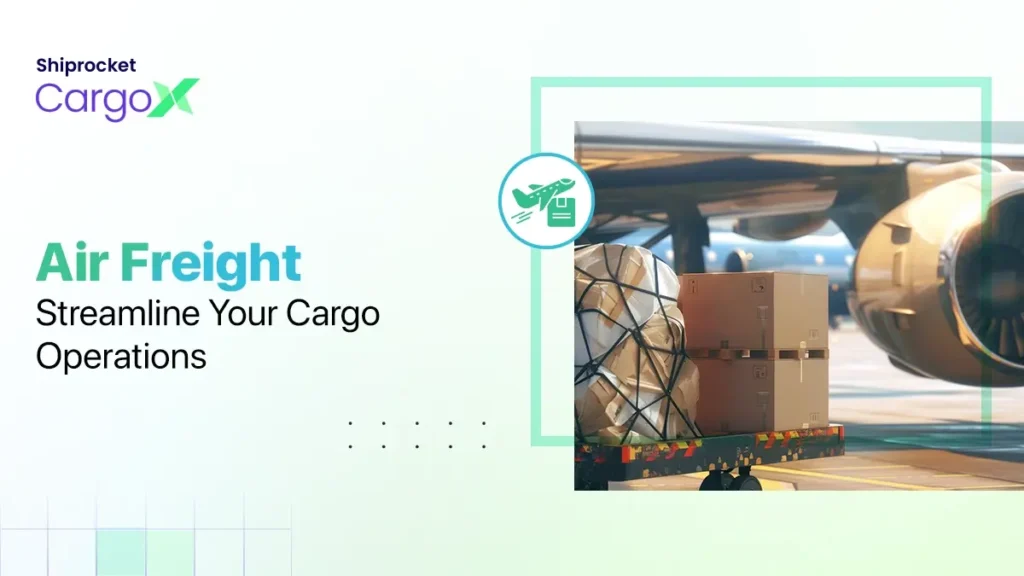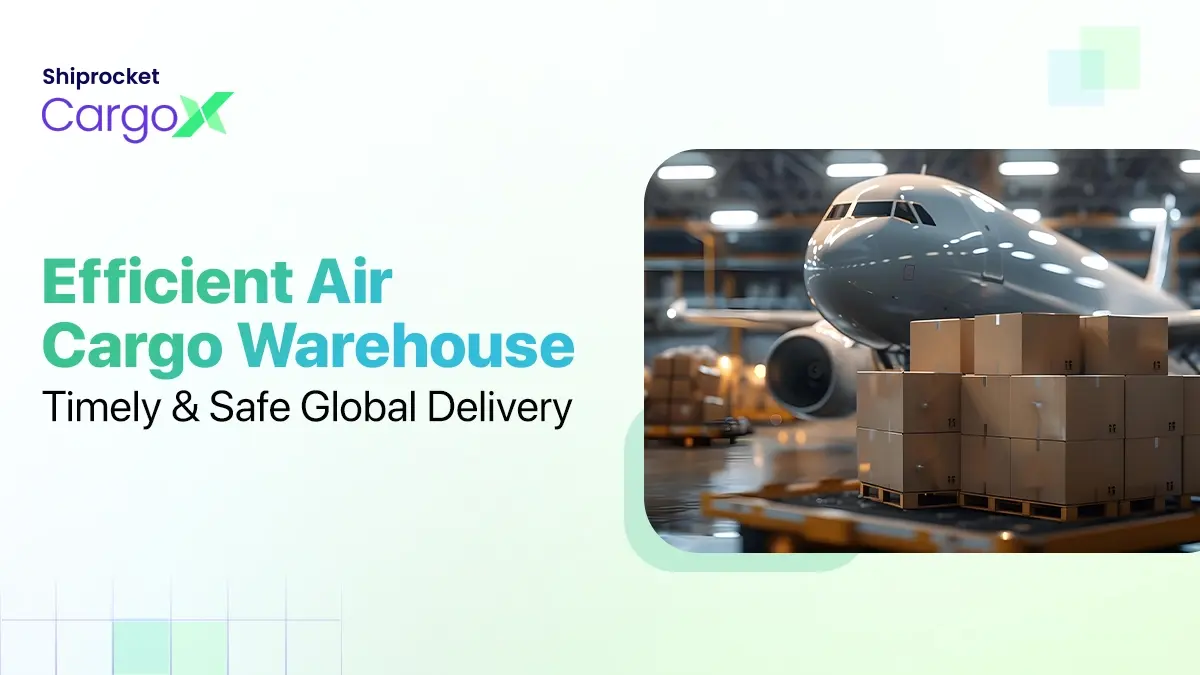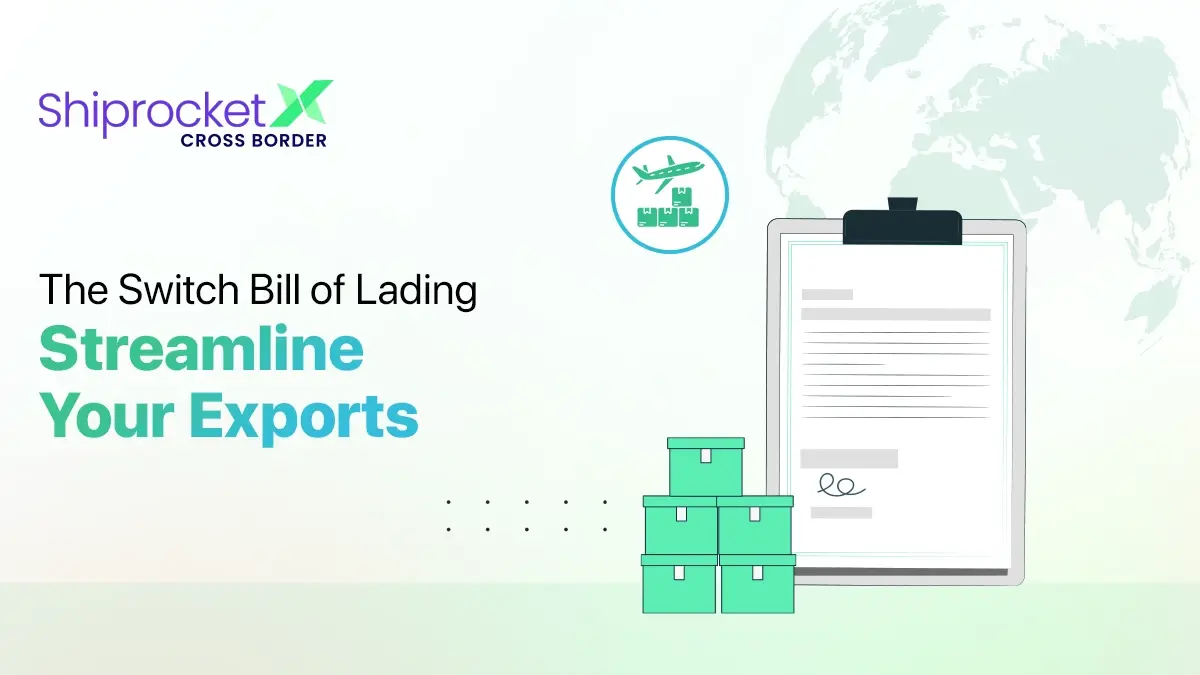Air Freight Operations: Navigating the Sky Logistics
- How Air Freight Works: The Step-by-Step Operational Procedure
- Export Compliance: Navigating Legalities Before Air Freight
- Essential Paperwork in Air Cargo Operations
- Export Regulations in the Country of Origin
- Import Guidelines in the Importing Country
- Decoding Air Cargo Terminology
- The Need for Air Freight Operations
- The Benefits of Air Freight
- CargoX: Leading the Way to Seamless International Air Freight
- Conclusion
Air freight shipping has revolutionised global trade. It is the most dependable and fastest transportation method today. Several coordinated processes are employed in air freight operations to ensure quick and secure delivery of a consignment to its destination.
This mode of transportation ensures seamless communication between origin and destination sites worldwide by utilising a complex network of airports, specialised cargo aircraft, and advanced logistics systems. In addition, air freight operations follow strict safety and security guidelines, ensuring cargo protection and upholding the integrity of international supply networks.
This blog details how air freight works. It also dives into its benefits, import and export guidelines, legalities involved, paperwork needed, and more.
Let us jump in.

How Air Freight Works: The Step-by-Step Operational Procedure
Air freight is the movement of cargo from one point to another through an aircraft. It entails swiftly transporting cargo across the world. Although this sounds extremely simple, the process is comparatively complicated. The steps below detail the air freight process:
Step 1: Request a quotation and then place an order for your product
Upon deciding the specific air freight carrier best suited for you, you will need to speak and negotiate with your suppliers overseas to make sure they can meet your needs. What should you research?
- Find the right supplier through proper research.
- Choose your incoterms that enable the allocation of risk throughout your shipping process.
- Build a relationship with your freight forwarder.
- Use the proper commercial documents during the process. The documentation process is complicated, but it can be handled efficiently if you choose the right freight forwarder.
You need to be sure that air shipping is the way to go for your business, as it can be expensive. It should not bite into your profits. You can even choose to compare the benefits of air freight and other forms of shipping to understand what will meet your needs best.
Step 2: Understanding the impact and workings of air freight
Before signing any documentation with your supplier, you must understand the workings of air freight. The impact of air freight must also be considered. You must look into:
- The workings of volumetric ratios: When you ship your consignments through air cargo, you will not just pay for the kilograms of your consignment. You will also have to pay for the room your cargo takes up on the aircraft. Understanding this will help you get a clear understanding of how the costs will work.
- Containers of air freight: Unit load devices can be used for shipping cargo. There are several restrictions based on the dimensions of the cargo being shipped. You must ask your freight forwarding partner to understand the container restrictions.
- Security regulations of air freight: The needs of your cargo must be examined and understood before every export operation. The examination can be at the price, consolidated, or stacking and loading level. The regulations at each of these stages are different, and there is a web of compliances you must meet. Hence, having a proper understanding of this is mandatory.
Step 3: Cargo packing and booking of your air freight
The next step in this process is to pack your cargo as per the standards. Then, you must proceed to book your freight. You must ensure you do this when you do the packing and booking processes:
- You must speak to your freight forwarder regarding any restrictions applicable to the aircraft. Your consignment must fit in the airplane and the x-ray equipment.
- You must compare the differences between different service providers. Different options and routes are available to get this done, and understanding which works best for you is the key.
- Choosing the right path is crucial. Different airlines, routes, transit times, etc., are some things to consider while choosing.
Step 4: Arrangement of shipment by freight forwarder
Your freight forwarder is responsible for arranging your shipment after packing and booking your consignment. You must ensure you have all the relevant documents for air shipping. Every region has its own added specifications that you must comply with. Upon booking your flight, an airway bill will be procured. It will outline the service and contract of the carriage. The goods will then be transported to the destination, and they can generally be tracked through your freight forwarder.
Step 5: Customs clearance of goods
When your cargo arrives, it will undergo several stages. In transit, customs clearances will be in progress and your goods will arrive at the destination. Duties and taxes must be paid. Following this process, when the cargo lands, your goods will be moved to an operation terminal. It will then be subjected to a rigorous customs control process. After this, your cargo will be ready for collection.
Step 6: Transportation of the goods from the port to the buyer
Upon outturning and clearing the goods from the customs department, a transporter will collect this cargo and deliver it to the buyer’s doorstep. The final delivery must be determined in advance.
Export Compliance: Navigating Legalities Before Air Freight
When you set up the complete process of shipping consignment by air, you must ask yourself a set of questions. This is crucial as the law is an inseparable part of air freight operations. The questions you must ask include the following:
- What laws prohibit the export of a specific product?
- Should any pre-export conditions be met?
- Is there any tax levied on the country of import?
- What are the restrictions on exporting a specific item?
- Is an import license needed by a consignee?
- How long does it take to obtain an importer license?
Essential Paperwork in Air Cargo Operations
The air cargo operations include tremendous amounts of paperwork. Documentation is an inevitable part of shipping. Certain standard documents need to be included while shipping via air. Moreover, additional documents will be required depending on the country of shipping. Here are some essential documents that you need for air cargo operations:
- Commercial invoice
- Billing invoice
- Manifest of cargo
- Packing list
- Airway bills
- Export licence
- Import licence
- Declaration documents for export
- Control statements
Export Regulations in the Country of Origin
Upon proper document verification and completion of the other steps in the air freight process, the next step is to review the policies in place in the export country. Here are some questions you should ask when examining the export regulations in the country of origin:
- Is there any restriction on export?
- Is there any need for an export declaration by the local authorities?
- What type of export duties are levied?
- Is there a need for an export permit?
- What documents must be added during the export?
Import Guidelines in the Importing Country
You have to check the following import guidelines with the importing country:
- Destination airport
- Documentation
- Information relevant to the consignment
- Dimension of the consignment
- Information on the packaging
- Transit details
- Need for commercial invoices
Decoding Air Cargo Terminology
Here is a list of terms used in the air freight world:
- Airway bill: Transport document that accompanies the consignment
- Belly cargo: Lower deck of the airplane where the cargo is loaded
- Bill of Entry: An e-document sent for the clearance of goods to the customs authorities
- Cbm: Cubic meter
- Certificate of Origin: A document that attests to the origin of the goods
- Cut-off time: The time threshold that determines the duration before which the consignment must be loaded into an aircraft
- DGR: Dangerous Goods Regulation
- Dimensions: Length x Breadth x Height
- ETA: Estimated time of arrival
- ETD: Estimated time of departure
- Form A: A document issued by the local Chamber of Industry and Commerce regarding the origin of the cargo
- Gross weight: Overall weight of goods
- Incoterms: Trade terms
- MRN: Movement Reference Number
- Nose Load: Freight loading of the consignment via the aircraft’s nose
- TLS: Three Letter Code
- ULD: Unit Load Device
The Need for Air Freight Operations
The high rates of air transportation do not diminish its need and demand. This is due to the several benefits like air freight being the swiftest shipping method and offering a high level of security. It also minimises damage and theft. A consignor can send the cargo almost anywhere using air freight. It also ensures prompt delivery; thereby, ensuring compliance with the terms and conditions of the contract.
The Benefits of Air Freight
The major benefits of air freight include the following:
- Air freight is one of the fastest shipping methods compared to road transport or sea freight.
- You can send your cargo almost anywhere in the world.
- The transportation time for air freight is short, lowering the insurance premium. When the insurance premium is low, it means more savings.
- Traceability is easier with air freight.
- Air freight ensures high levels of security and a reduced risk of theft.
- Air shipments also require less packaging.
CargoX: Leading the Way to Seamless International Air Freight
Shiprocket CargoX is leading the way to seamless international air freight by offering a comprehensive, user-friendly platform tailored to streamline the entire shipping process. It provides businesses with real-time tracking, automated documentation, and integrated customs clearance, ensuring shipments are managed precisely and efficiently. CargoX uses cutting-edge technology to offer end-to-end visibility and control, minimising delays and optimising logistics. With features like instant quotes, route optimisation, and compliance management, CargoX is a reliable partner for businesses aiming to simplify their international shipping needs. Their commitment to transparency, cost-effectiveness, and exceptional customer service makes CargoX the go-to choice for hassle-free global air freight solutions.
Conclusion
Moving cargo from one point to another using planes is what constitutes air freight. Using air freight enables you to transport your cargo in the quickest possible manner. The process might seem extremely simple, but it is highly complicated. It also includes a tedious documentation process as every country has its requirements, and thus, you must comply with them. Understanding the needs of your consignment will help you choose the right freight forwarder.




